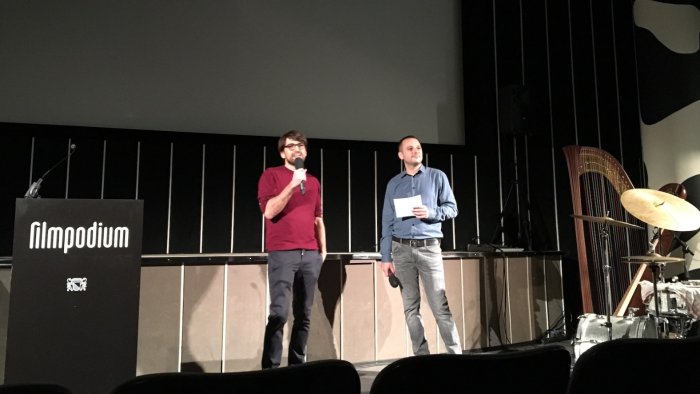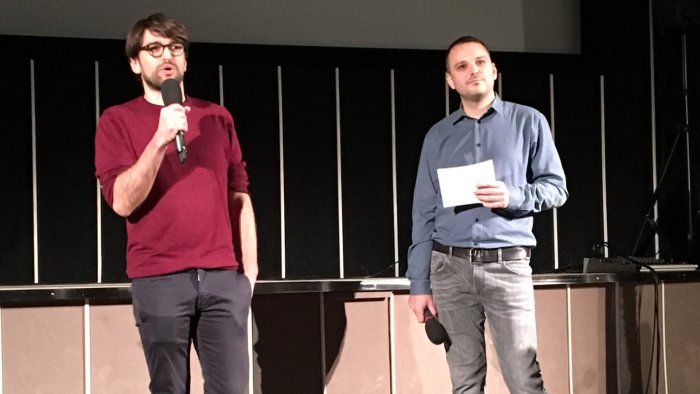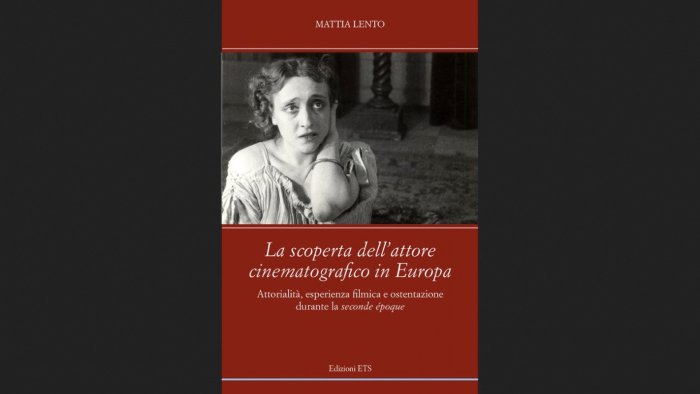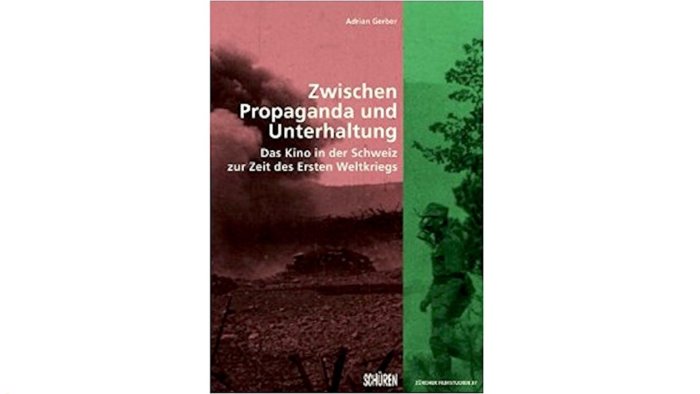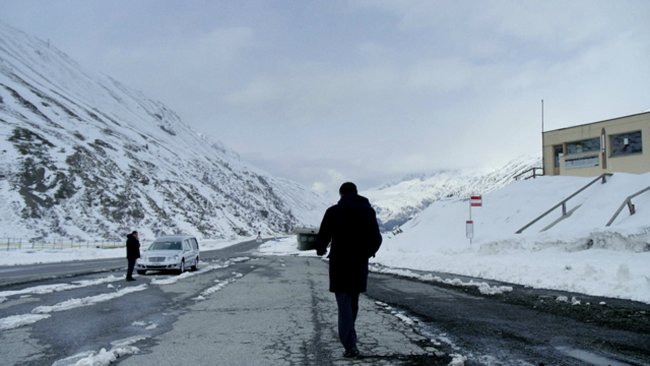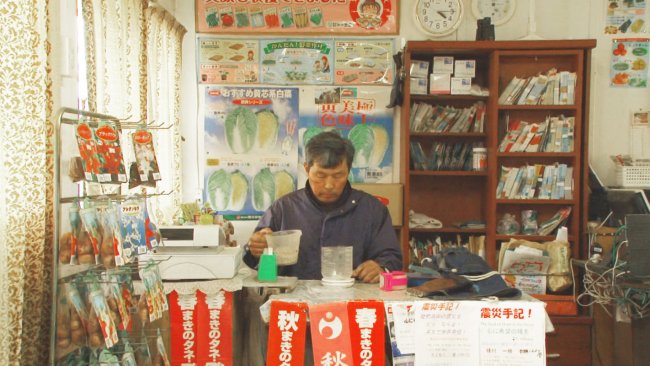Maciste alpino | Adrian Gerber | Mattia Lento
[…] He focuses on the public dimension of the cinema of "the beginnings", in order to view the cinema not only as an expression or product of politics, but also as an active initiator in the political sphere, thus becoming an influential element for the “mediatization” of the war.
[…] On the contrary, the people of the 1910s were fully accustomed to the fact that a film is a bearer of intentions; one reason being that, in the epoch of the “cinema of attractions” – to use Tom Gunning’s definition –, the spectator lives at a certain distance to the film “object”.
[…] Thanks to this approach, we can understand the “materiality” of the actor, his/her “body”, which is intended to be viewed as a complex performative presence that also embraces the para-textual elements of cinema: posters, visual prologues, advertisements, up to and including the receptive aspects like film reviews or literary tales about experiences in cinema.
Text: Giuseppe Di Salvatore
The cinema event at Filmpodium
On the 14th of December 2017, the Filmpodium Zurich hosted an exceptional event: the projection of a 101-year-old film, Maciste alpino, by Luigi Romano Borgnetto and Luigi Maggi. Not only was it exceptional to have a chance to see the recently well restored copy of this milestone of the war-films from the early days of cinema (the restoration was realised in 2014 at the workshop L’Immagine Ritrovata in Bologna by the Venice Biennial and the Museo Nazionale del Cinema in Turin), but it was also an occasion to “hear” the cine-concert version played by the harp-percussion duo Linda Vogel and Vincent Glanzmann, who proposed an intelligent musical commentary, measured more on the larger rhythm of the dramaturgic sections than on individual scenes and actions within the story.
The live music accompaniment emphasized the event-like dimension of the showing; more than celebrating only the 101st anniversary of the film, we can say that the Filmpodium was celebrating the 100th anniversary of the first Zurich film projection. Thanks to the curation of the event by two cinema scholars Mattia Lento and Adrian Gerber, who were responsible for bringing the restored version of the film to the Swiss public for the first time, we discover that the first projection of Maciste alpino in Zurich 100 years ago had a special meaning and impact. In an event that served also as a double book launch, Lento and Gerber briefly presented their two publications, outcomes of their PhDs at the University of Zurich: here, they both gave much attention to the history of the movies' reception in the 1910s, which coincided with the First World War and with the first large affirmation of the cinema institution in Switzerland. Maciste’s adventures during the outburst of war between Italy and Austria-Hungary explicitly served the intentions of the Allies’ propaganda against the Central Powers and, together with the enthusiastic spur for patriotism and nationalism, the Italian production sharply stigmatised the Austrian enemy as wicked or dumb.
Adrian Gerber: cinema as a political actor
Adrian Gerber’s in-depth research on cinema as a propaganda tool in Switzerland during the First World War, Zwischen Propaganda und Unterhaltung. Das Kino in der Schweiz zur Zeit des Ersten Weltkriegs (Schüren, 2017), is thus a sort of prism through which we can better understand the function and status of a film like Maciste alpino. Neutral Switzerland lived a period of strong internal division, between the Latin speaking part that sympathized with the Entente Powers and the German speaking part that sympathized with the Central Powers. In this context, the rapid affirmation of cinema temporally coincided with its exploitation to fuel a “war of opinions” within the Swiss public sphere. Also, thanks to his arguments in favour of Kurt Imhof’s conception of the public sphere (Öffentlichkeit) as a self-reflective medium of society, Gerber’s study helps us to see how cinema, public communication, and the war went through a moment of intense intersection. He focuses on the public dimension of the cinema of "the beginnings", in order to view the cinema not only as an expression or product of politics, but also as an active initiator in the political sphere, thus becoming an influential element for the “mediatization” of the war. And for him, this holds true independently of a conscious or unconscious exploitation of cinema for political means: even the cinema that is conceived and received as entertainment shares the same political charge with propaganda films. Gerber’s study is devoted to illuminating the nuances between propaganda and entertainment in a public sphere that would be politically loaded even without cinema, but it is perhaps even more so specifically thanks to cinema.
The reasons for the ecumenical success of Maciste alpino
The fact that a film like Maciste alpino had such a strong impact is not due to the apparent tendency to confuse truth and fiction. This may have been true for the very first years of the 20th century, but not in 1916; by then, the war “representations” – documented or reconstructed – had already become a filmic “genre”, and a film like Rigadin aux Balkans, by George Monca for Pathé, could already – in 1912 – ridicule the “genre” and, thus, disseminate some scepticism towards the truthfulness of war films. On the contrary, the people of the 1910s were fully accustomed to the fact that a film is a bearer of intentions; one reason being that, in the epoch of the “cinema of attractions” – to use Tom Gunning’s definition –, the spectator lives at a certain distance to the film “object”. The narrative style that will later provide the typical “immersion” has yet to take root, and will do so thanks to the completely darkened cinema theatres and to the production and diffusion of longer films during the 1910s.
The peculiarity of the Zurich projection of Maciste alpino is its success, the sympathy of the German Swiss audience for the Central Powers notwithstanding. Gerber tells us that a similar film with explicit aspects of propaganda against the Allies would have been impossible to see in French Switzerland or in Tessin: the projection of Maciste alpino itself in German Switzerland is a symptom – according to Gerber – not of a greater liberality in this part of Switzerland, but of the fact that cinema was received here mainly as a source of entertainment (570). Joseph Lang, the most influential figure of Swiss film production and distribution in German Switzerland, made very positive remarks about the film (370-372), and this certainly would have put the censorious intentions of some political authorities at odds; authorities that were, however, very active in Switzerland and even tended to demonise the cinema as such. Also, the chief of German film propaganda in Switzerland, Harry Graf Kessler, stated that Maciste alpino is «more comic than propagandistic» (525).
Anaesthetization of the political through the filmic aesthetization
This is the perfect occasion to highlight a specific feature of Maciste alpino regarding its impact on the spectator, which I would tie into the “anaesthetization of its political charge”. At least three elements contribute to such anaesthetization: 1) the treatment of the war as an almost private affair where the point of view is the one of bourgeois particularism, 2) the pervasive humour that not only ridicules the enemy but finally results in making its hero also less credible, 3) the artistic sublimation through the exceptional attention given to spectacular views – mainly through the breath-taking shots of the icy mountains. Therefore, the anaesthetization of the political charge of the film is nothing but its aesthetization.
Mattia Lento: Maciste and the emergence of the actor
At this moment, I should introduce Mattia Lento’s study, La scoperta dell’attore cinematografico in Europa. Attorialità, esperienza filmica e ostentazione durante la seconde époque (ETS, 2017), which helps us highlight the decisive function of the actor, here Bartolomeo Pagano – one of the first Italian cinema “stars” together with Lyda Borelli and Ermete Zacconi – and the theatricality of cinema. Lento’s accurate research focuses on what he calls the seconde époque of cinema, during the 1910s, after the so-called “cinema of attractions” of early cinema. The emergence of the film actor marks the integration of theatrical codes and, at the same time, the first effort to distinguish the film actor from the theatre actor, as evidenced by the theatrical performances of the movie characters that play the role of actors in the films (200 ff).
Lento’s original perspective, reading the complexity of the actor's emergence in the cinema of the seconde époque, uses the category of “ostension”, including ostentation, as a criterion to underline the semiotic specificity of the “presence” of the actor (thus joining the wider group of research in the area of “ostension” within the media studies that was initiated in Switzerland by Christian Kiening). To this respect, we should refer to the “semiotics of experience” that allows us to go beyond the literary pattern of semiotics, and beyond the original/representational pattern as well, in order to include the indexical or demonstrative level of semiotics. In this way, the notion of “presence” makes sense even in the absence of its reference to a particular meaning – as has been programmatically proposed by Hans Ulrich Gumbrecht (138). Thanks to this approach, we can understand the “materiality” of the actor, his/her “body”, which is intended to be viewed as a complex performative presence that also embraces the para-textual elements of cinema: posters, visual prologues, advertisements, up to and including the receptive aspects like film reviews or literary tales about experiences in cinema. More precisely, this larger conception of the “materiality” of the actor brings Lento to import Jean-Pierre Sirois-Trahan’s notion of “mise-en-présence”, through which the presence of the actor necessarily involves the correlative presence of the spectator and, in this way, reinforces the intimate connexion between production and reception in the analysis of the emergence of the actor in cinema.
The attractive mixture of actor and character
If the “discovery” of the actor in the 1910s was largely dependent on the birth of the "star" system through the phenomenon of the Danish diva Asta Nielsen – a phenomenon that stimulated, and was also made possible thanks to, the introduction of the monopolistic production and distribution of a series of films created around the figure of the cinema star –, the parabolic success of Bartolomeo Pagano, alias Maciste, is equally paradigmatic of the affirmation of the "star" system in the 1910s. Contrary to Asta Nielsen, Pagano didn’t come from the theatre scene, but was a stevedore in the port of Genoa who was then “discovered” by filmmaker Giovanni Pastrone during the production of the first great Italian full-length film success, Cabiria (1914). In the following series of films on Maciste, Pagano interpreted himself or, better, “manifested” himself as the strongman – a cinema figure that was affirming itself in Italy through films like Quo Vadis? (1912) and Spartaco (1913). The superposition of actor and character was so effective that Bartolomeo Pagano officially changed his name as Maciste and in several films, Maciste alpino included, Maciste is nothing but an actor playing himself – exactly like the non-professional actor Pagano is playing himself at the beginning of his career. In Lento’s analysis of Maciste (154-155, 178-186), this reflective solution of a cinema that displays its dispositive is a way to “build” the specificity of the cinema actor in the cinema of the seconde époque (153). Maciste is a good example of how the status of the cinema actor benefits from his freedom such that he can almost be considered an author: a peculiarity that will be lost with the affirmation of the narrative patterns in the 1920s, where the cinema actor tended to regress to the status of an interpreter (285).
Presence, ostentation, complex performativity: they all outline the specificity of the actor in the cinema of the 1910s, which certainly displays an “attractive” relationship between the cinematic figure and the spectator. Lento tries to stress that this is no reason to consider the cinema of this epoch as still being dependent on the “cinema of attractions” of early cinema, insofar as the attraction is «exploited» or «domesticated» here (177). The reception of Maciste alpino at Filmpodium was, however, “absorbed” in a narrative dimension that clearly conveyed Maciste as a humorous attraction. The aesthetic dimension of the film pushed us away from the propagandistic intentions of the story allowing Maciste to occupy our attention and allowing Maciste alpino to be received more as an entertainment film than a political cinematic pamphlet.
Info
Maciste alpino | Film | Luigi Romano Borgnetto, Luigi Maggi | IT 1916 | 95’ | Filmpodium Zurich
La scoperta dell’attore cinematografico in Europa. Attorialità, esperienza filmica e ostentazione durante la seconde époque | Book | Mattia Lento | Editioni ETS, Pisa 2017
Zwischen Propaganda und Unterhaltung. Das Kino in der Schweiz zur Zeit des Ersten Weltkriegs | Book | Adrian Gerber | Zürcher Filmstudien 37 | Schüren, Marburg 2017
First published: December 26, 2017
